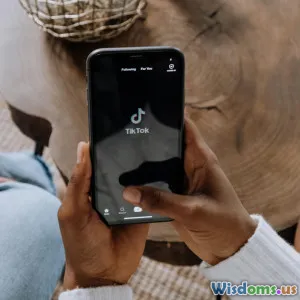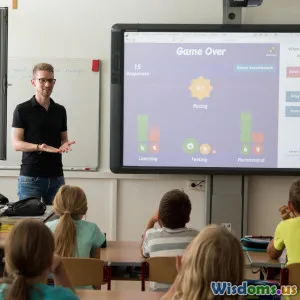
Is Social Media Harming Face to Face Communication Skills
8 min read Exploring how social media impacts face-to-face communication skills and what it means for our social lives. (0 Reviews)
Is Social Media Harming Face to Face Communication Skills?
In an age inundated with digital connections, the question arises: is social media harming our face-to-face communication skills? As platforms like Instagram, Snapchat, and TikTok dominate daily routines, many wonder if these vibrant online interactions come at the expense of meaningful in-person conversations. This inquiry isn't just about nostalgia for the 'good old days'—it's about understanding how our evolving communication habits shape society and individual well-being.
The Digital Shift in Communication
The rise of social media has dramatically altered how people connect. According to the Pew Research Center, as of 2023, over 70% of adults in the United States use at least one social media platform regularly. These platforms provide opportunities for instant messaging, sharing experiences, and maintaining relationships across distances, offering unprecedented social reach.
However, this digital convenience might come with hidden costs. Unlike face-to-face interactions that rely on tone, body language, facial expressions, and immediate feedback, social media communication often lacks these nuances. For instance, the subtleties of sarcasm or empathy can easily be missed or misinterpreted in a text or emoji, often leading to miscommunication or social isolation.
Changes in Social Behaviors
Reduced In-Person Interactions
Studies indicate a decline in the frequency and quality of face-to-face conversations among younger generations. A 2018 research study published in the American Journal of Preventive Medicine found that teens spending more than three hours daily on electronic devices were 35% more likely to feel socially isolated compared to peers spending less than an hour.
Beyond quantity, the quality of interactions is affected. The omnipresence of smartphones during social gatherings often results in ‘phubbing’—the act of ignoring someone in favor of a phone—which can deteriorate relationship satisfaction. A 2019 survey by the software company Research Now revealed that 46% of smartphone users admitted to regularly engaging with their devices during conversations, causing frustration among the people they are physically present with.
Impact on Empathy and Emotional Intelligence
Face-to-face communication fosters empathy by allowing individuals to read emotional cues and respond empathetically. Social media’s asynchronous and often impersonal style may blunt these skills over time. Dr. Nicholas Kardaras, a clinical psychologist specializing in digital addiction, argues that overuse of social media can weaken attention spans and impair emotional regulation, making it harder for people to engage deeply during real-life conversations.
Real-World Insights and Expert Opinions
Several psychologists and communication experts stress the importance of balancing social media use with offline interactions. Professor Sherry Turkle, renowned for her work on technology and human behavior, highlights in her book Reclaiming Conversation that constant connectivity ironically leads to increased feelings of loneliness. She advocates for reclaiming face-to-face conversations as essential for building true intimacy and understanding.
Moreover, healthy communication skills are critical beyond personal relationships—they are vital for workplace success. Companies increasingly emphasize interpersonal skills, such as active listening and conflict resolution, skills that may weaken if face-to-face practice diminishes.
Social Media’s Positive Effects on Communication Skills
It is important to acknowledge that social media isn’t entirely a villain. For many, it serves as a bridge to social engagement, especially for individuals with social anxiety, disabilities, or those located in remote areas. Platforms such as Facebook groups or Twitter chats allow these individuals to participate in conversations they might otherwise miss.
Furthermore, social media fosters new forms of expression and communication, such as memes or viral challenges, which have become cultural touchstones introducing creative collaboration and inclusive dialogue worldwide.
Strategies for Balancing Digital and In-Person Communication
Mindful Use of Technology
Building awareness about one’s own social media habits is a key step. Setting boundaries, such as designated phone-free times during meals or social events, can significantly improve attention and connection.
Enhancing Face-to-Face Interaction Skills
Adults and educators can promote activities that develop interpersonal skills—like role-playing scenarios, group discussions, and community engagement projects—that nurture empathy, attentive listening, and emotional expression.
Encouraging Digital Detoxes
Periodic breaks from social media have been shown to reduce anxiety and improve focus. A 2021 study in Cyberpsychology, Behavior, and Social Networking found that a one-week social media hiatus led to notable improvements in both mood and face-to-face communication confidence.
Conclusion
The impact of social media on face-to-face communication skills is complex and multifaceted. While there’s evidence indicating that excessive reliance on digital platforms can diminish social skills and emotional connection, social media also opens new channels for interaction that were previously unavailable.
Ultimately, the onus lies on individuals and society to cultivate a healthy balance. By recognizing the limitations of digital communication and actively nurturing real-world interactions, we can safeguard the art of conversation in an increasingly digital world. Embracing technology as a tool—not a replacement—for human connection holds the key to thriving in both realms.
References:
- Pew Research Center, Social Media Fact Sheet (2023).
- Hunt, M. G., et al. (2018). "Association between social media use and depression in US young adults." American Journal of Preventive Medicine.
- Research Now (2019). Survey on Smartphone Usage During Conversations.
- Turkle, Sherry. Reclaiming Conversation (2015).
- Kardaras, Nicholas, Glow Kids (2016).
- Cyberpsychology, Behavior, and Social Networking (2021 Study on Social Media Hiatus).
For readers eager to maintain authentic human connections, it’s time to evaluate your digital diet and invest more in face-to-face dialogues that nurture empathy and understanding.
Rate the Post
User Reviews
Popular Posts





















